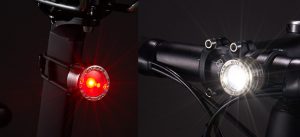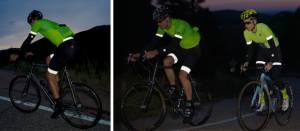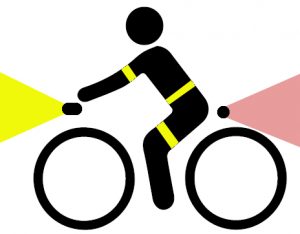by John Brown, HaveFunBiking.com
No matter your bicycle riding skills, bike lights are essential to ensure a safe ride, day or night. Lights aren’t only needed when the sun goes down. In fact, lights are beneficial when riding in conditions where traffic may be present or visibility is limited. That’s where proper lighting can be a great asset. Additionally, many states, such as Minnesota, require cyclists to have lights on their bikes when operating from dusk until dawn. Here are two types of bike lights on the market that allow you to see better while also making yourself visible to others.
Bike lights that Help You See
Lights that help you see are usually high-output LEDs that cast a focused beam of light in front of you. These lights start at 600 lumens and increase output from there—their size and run time depending on the battery. For example, rechargeable and battery-operated lights are usually larger, while lights run by a generator are smaller.
So, how do you know which one is best for you? It all depends on how often you plan on using it. The battery-operated kind works well as a backup in the rare chance you get caught in the dark. The rechargeable kind is best if you plan to use them regularly and want to save on the cost of buying batteries. If you ride long periods in the dark, it’s hard to beat a generator-powered light. Any of these lights will be great for unlit roads, trails, or paths.

When you look to buy a light, they are all compared by the lumens they produce. What’s a lumen, you ask? Well, lumens are the most common unit of measurement for brightness. In the past, lights were measured by the amount of energy they consumed (in watts), but with LEDs that produce more light output with less power consumption, measuring brightness through wattage has become increasingly complex. A simple rule to remember: more lumens equal brighter light. For comparison, the iPhone flashlight produces less than 10 lumens.
Bike lights to Help People See You.
The lights are designed to be seen and use an LED to flash intermittently when turned on. Surprisingly, they can be as small as a few coins stacked on top of one another and have run times in the hundreds of hours. Additionally, they are usually easy to move from bike to bike if needed and are great for city streets and well-lit paths. Some riders are now finding added security in running these lights during the daytime.

Reflectivity
Another great way to ride safely in the dark is to use reflective products. Thanks to advancements in reflective technology, you can find entirely reflective clothing that looks like standard fabric and glows when hit by light. There are reflective stickers you can adhere to your bike and reflective bags you can mount behind the saddle or on your handlebars.

How to be Seen
Visibility is crucial for safety, so it’s best to adopt a belt-and-suspenders approach. A headlight will allow you to see and be seen from the front. Match that with a reflective jersey, and you become visible from the sides as well. Mount a rear blinker, and you become visible from 360 degrees.

Sign up for our free, weekly E-Magazine for more great content!


